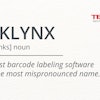
Companies that invested in integration technology to improve supply chain and organizational agility reaped significant financial gains in 2021, according to a study presented by Cleo and conducted by Dimensional Research. In fact, business leaders from one in five companies (19%) stated that increased agility resulting from such investment drove $3,000,000 or more in additional revenue in 2021.
“The global pandemic and supply chain disruptions continued to plague business in 2021. Such challenges had a direct impact on key business relationships, but also created opportunity for companies to rethink their strategies and invest more astutely in supply chain integration technology,” said Tushar Patel, chief marketing officer with Cleo. “Our survey shows an agile supply chain starts with flexibility and control at the integration layer. By proactively ensuring that their integration strategies complement their other technology investments, companies win -- both in terms of revenue generation and improved relationships with their ecosystem partners.”
From BusinessWire:
- For 50%, it was at least $1,000,000, and for three out of four (73%), it was at least $500,000 – proving that integration technology should be a top strategic priority among business executives.
- For two-thirds (68%) of respondents, the pandemic was the greatest external threat to their business, followed by supply chain disruption (44%).
- Some 90% of companies said they replaced or terminated at least one business partner in 2021, citing supplier problems (60%), manufacturing problems (50%) and shipping problems (44%). Additionally, 48% of businesses suspended or terminated two or more lines of business in 2021.
- The top investment made by executive was in integration technology. Nearly six in 10 executives (59% of those surveyed) invested in integration technology as their primary method to respond to disruptions threatening their business. This was followed by 53% who invested in back-office applications (e.g., enterprise resource planning; customer relationship management; warehouse management system; transportation management solutions and more) and 45% who found new trading partners (suppliers, customers, shippers).
“Over the next 12 months, we expect forward-thinking executives to continue to make the necessary supply chain technology investments to drive business agility – with integration investments leading the way. It really will become a conversation about table stakes,” says Patel.




















